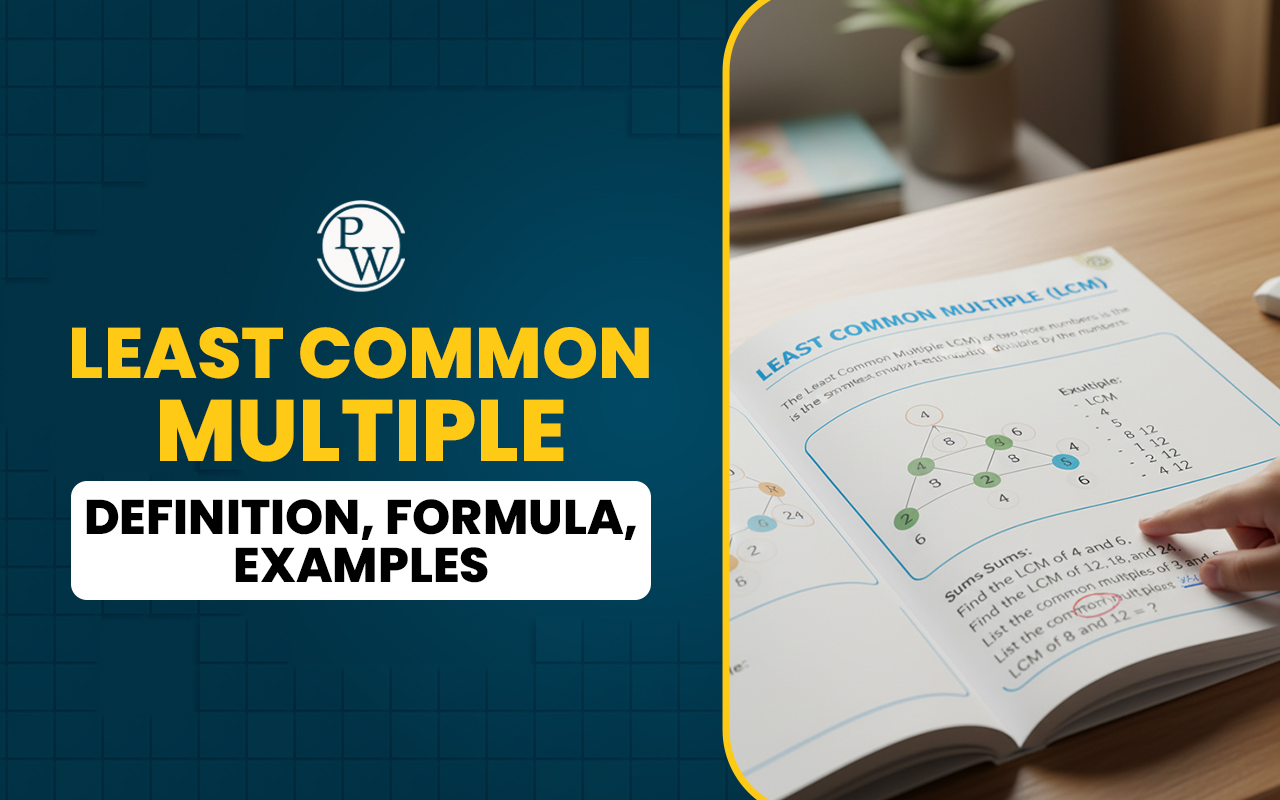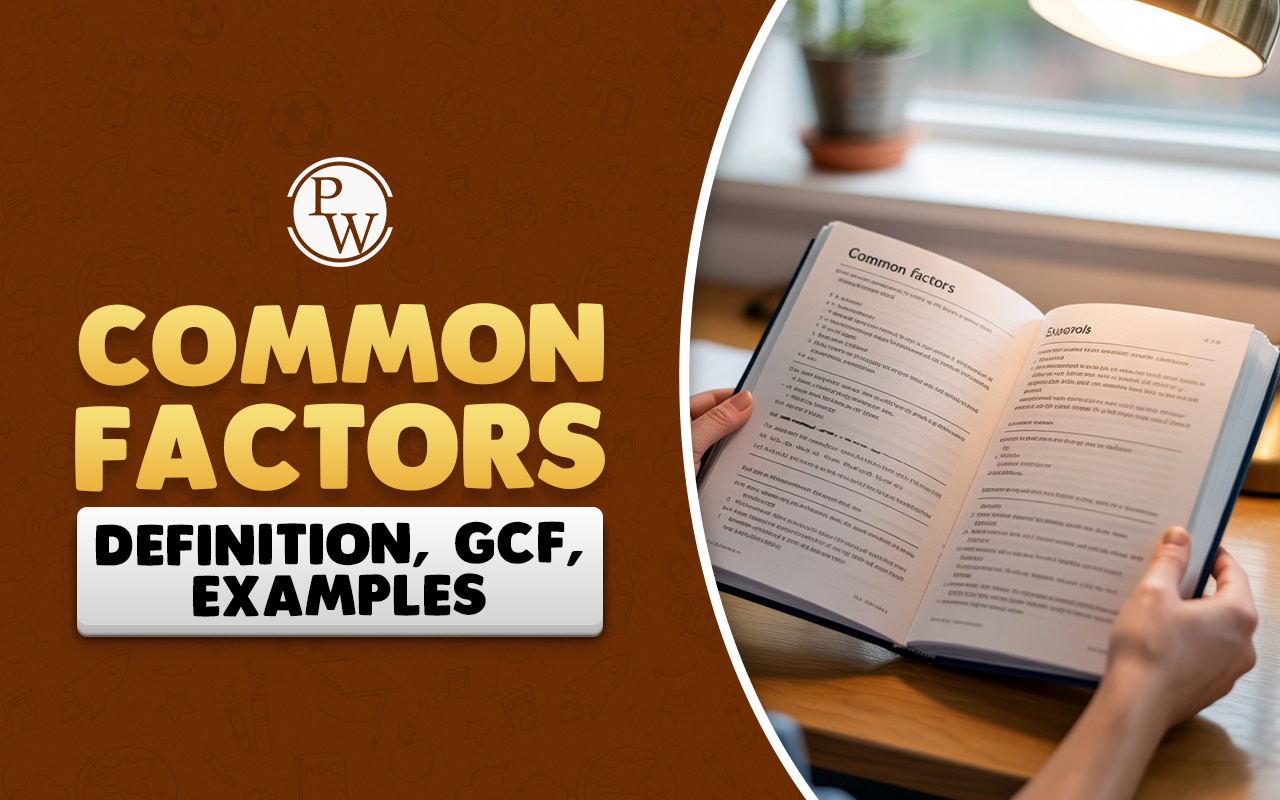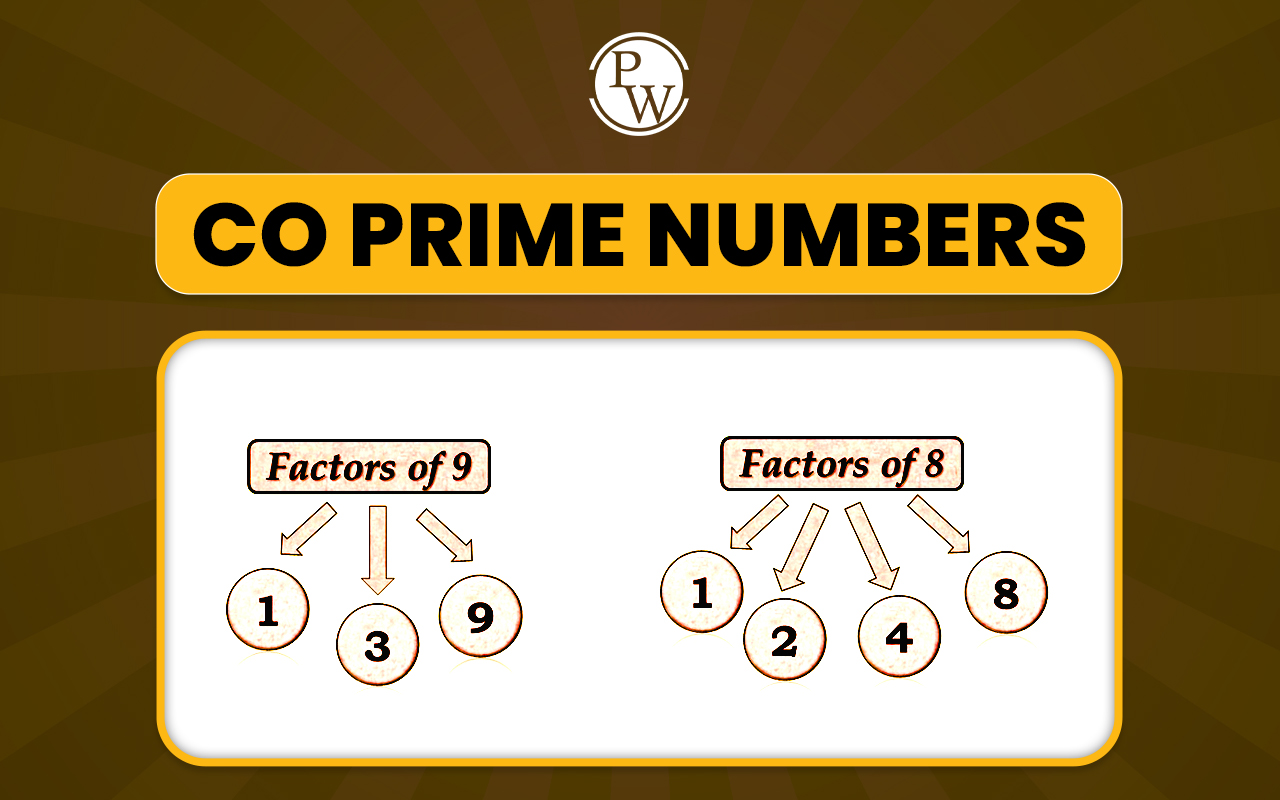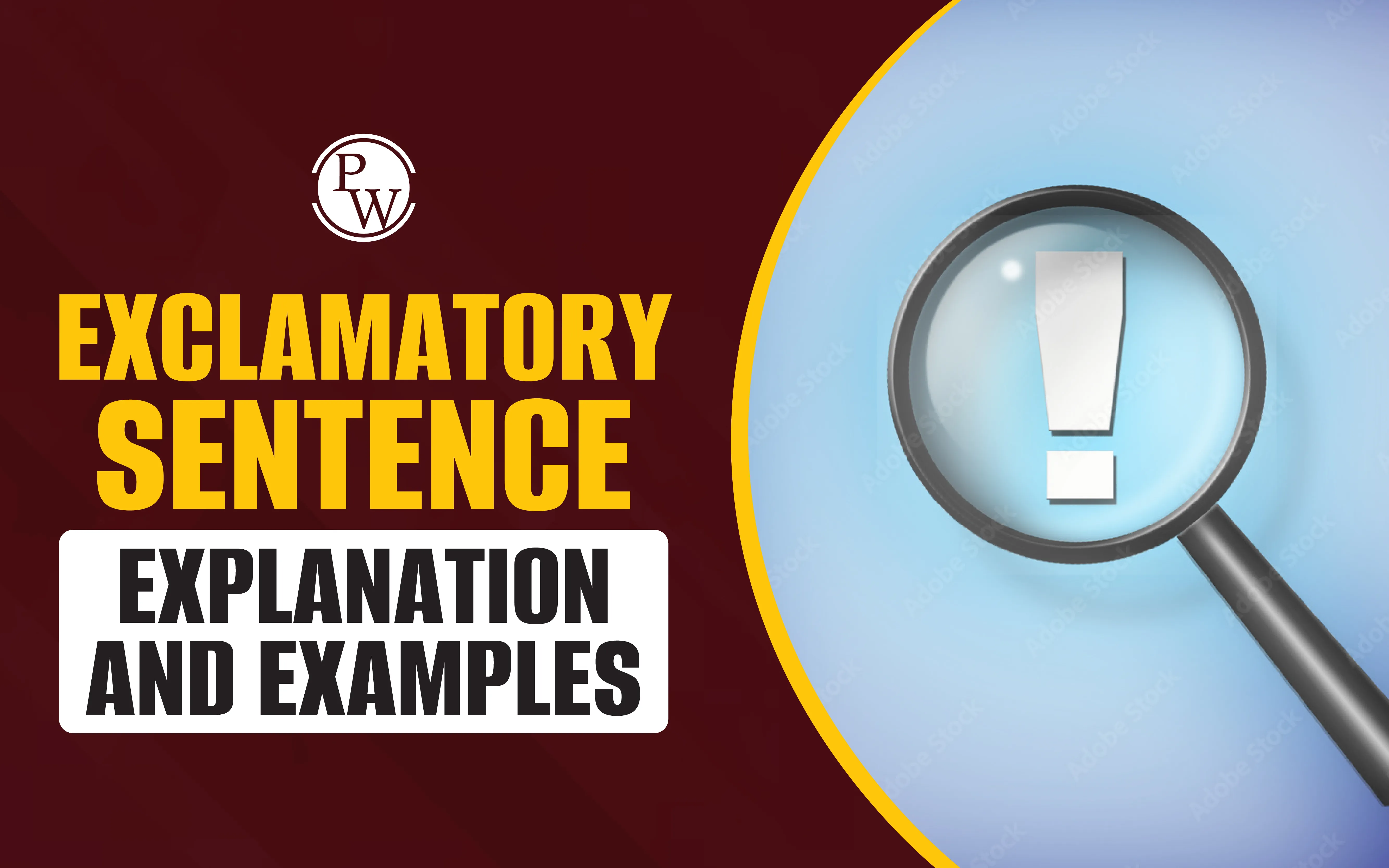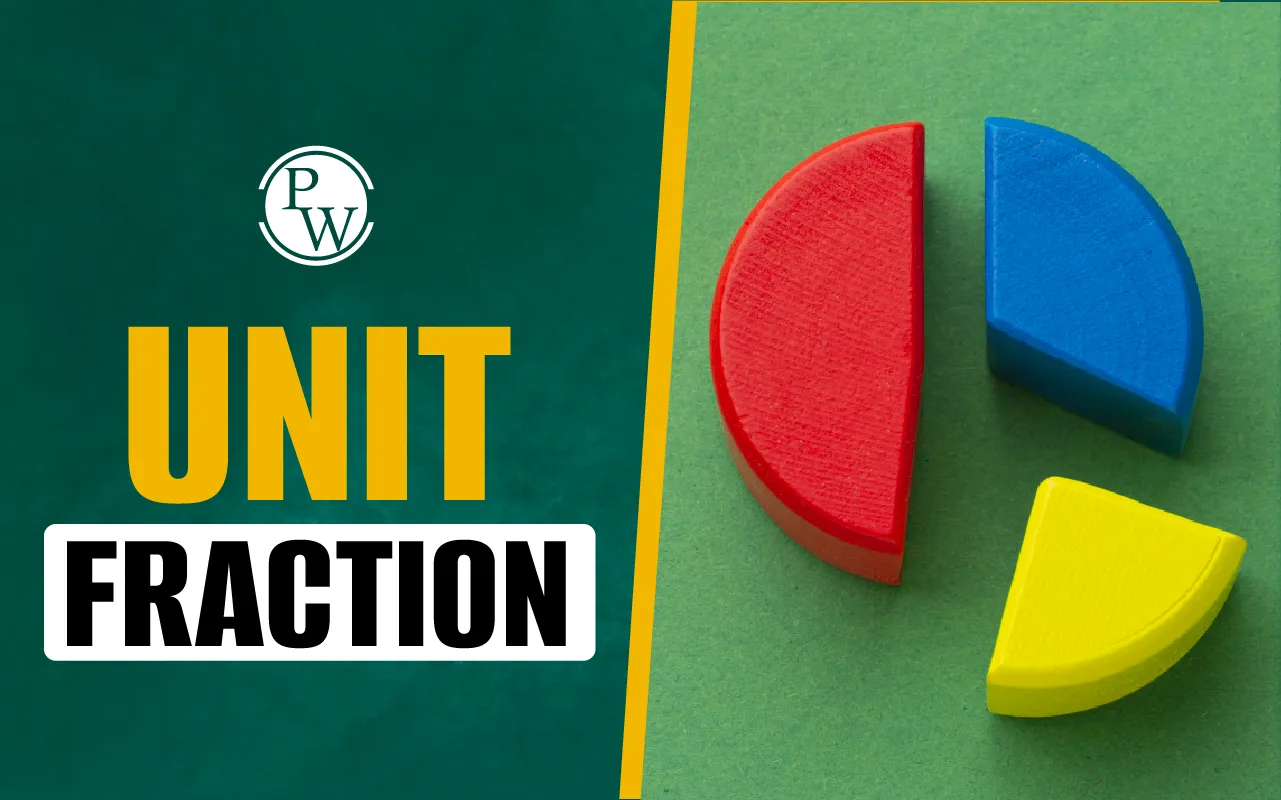
Fraction Questions for Class 7: Understanding fractions is important for Class 7 students as it forms a foundation for more advanced mathematical concepts.
Fraction questions can vary in complexity, covering topics such as simplifying fractions, adding and subtracting fractions with like and unlike denominators, multiplying and dividing fractions and converting fractions to decimals and percentages. Students can practice solving problems like finding the equivalent fraction, determining the least common multiple for addition or subtraction, and solving word problems that involve fractions in real-life scenarios. By engaging with a variety of fraction questions, students will enhance their problem-solving skills and deepen their comprehension of this important math topic.What are Fractions?
Fractions are a way to represent a part of a whole. They are written in the form a/b, where a and b are whole numbers, also, b ≠ 0.Proper Fraction : A proper fraction is one where the numerator is less than the denominator, indicating that it represents a part of the whole.
Improper Fraction : An improper fraction is where the numerator is greater than or equal to the denominator. This means it represents a whole or more than one whole.
Fraction Questions for Class 7 Overview
Fraction Questions for Class 7 PDF
The PDF containing Fraction Questions for Class 7 is available for download below. This resource includes a variety of questions designed to help students practice and reinforce their understanding of fractions. With clear explanations and a range of problem types this PDF is an excellent resource for students to enhance their skills in handling fractions. Click the link below to access the PDF and start practicing.[Download Fraction Questions for Class 7 PDF]
Fractions Questions and Answers for Class 7
Here are some common fractions questions along with their answers that are suitable for Class 7 students:1. Compare the following fractions by using the symbol > or < or =:
(i) (7/9) and (8/13)
(ii) (11/9) and (5/9)
(iii) (37/41) and (19/30)
(iv) (17/15) and (119/105)
Solution:
(i) Given (7/9) and (8/13) Taking LCM for 9 and 13 we get, 9 × 13 = 117 Now we convert the given fractions into its equivalent fractions, then it becomes (7 × 13)/ (9 × 13) and (8 × 9)/ (13 × 9) Therefore (91/117) > (72/117) Hence (7/9) > (8/13) (ii) Given (11/9) and (5/9) As the denominator is equal, they form equivalent fractions. But we know that 11 > 5 Hence (11/9) > (5/9) (iii) Given (37/41) and (19/30) Taking LCM for 41 and 30 we get, 30 × 41 = 1230 Now we convert the given fractions into its equivalent fractions, then it becomes (37 × 30)/ (41 × 30) and (19 × 41)/ (30 × 41) Therefore (1110/1230) > (779/1230) Hence (37/41) > (19/30) (iv) Given (17/15) and (119/105) Taking LCM for 15 and 105 we get, 5 × 3 × 7 = 105 Now we convert the given fractions into its equivalent fractions, then it becomes (17 × 7)/ (15 × 7) and (119/105) Therefore (119/105) = (119/105) Hence (17/15) = (119/105)2. Arrange the following fractions in ascending order:
(i) (3/8), (5/6), (6/8), (2/4), (1/3)
(ii) (4/6), (3/8), (6/12), (5/16)
Solution:
(i) Given (3/8), (5/6), (6/8), (2/4), (1/3) Now we have to arrange these in ascending order, to arrange these in ascending order we have to make those as equivalent fractions by taking LCM’s. LCM of 8, 6, 4 and 3 is 24 Equivalent fractions are (9/24), (20/24), (18/24), (12/24), (8/24) We know that 8 < 9 < 12 < 18 < 20 Now arranging in ascending order (8/24) < (9/24) < (12/24) < (18/24) < (20/24) Hence (1/3) < (3/8) < (2/4) < (6/8) < (5/6) (ii) Given (4/6), (3/8), (6/12), (5/16) Now we have to arrange these in ascending order, to arrange these in ascending order we have to make those as equivalent fractions by taking LCM’s. LCM of 8, 6, 12 and 16 is 48 Equivalent fractions are (32/48), (15/48), (18/48), (15/48) We know that 12 < 15 < 18 < 32 Now arranging in ascending order (12/48) < (15/48) < (18/48) < (32/48) (6/12) < (5/16) < (3/8) < (4/6)3. Arrange the following fractions in descending order:
(i) (4/5), (7/10), (11/15), (17/20)
(ii) (2/7), (11/35), (9/14), (13/28)
Solution:
(i) Given (4/5), (7/10), (11/15), (17/20) Now we have to arrange these in descending order, to arrange these in descending order we have to make those as equivalent fractions by taking LCM’s. LCM of 5, 10, 15 and 20 is 60 Equivalent fractions are (48/60), (42/60), (44/60), (51/60) We know that 51 > 48 > 44 > 42 Now arranging in descending order Hence (17/20) > (4/5) > (11/15) > (7/10) (ii) Given (2/7), (11/35), (9/14), (13/28) Now we have to arrange these in descending order, to arrange these in descending order we have to make those as equivalent fractions by taking LCM’s. LCM of 7, 35, 14 and 28 is 140 Equivalent fractions are (40/140), (44/140), (90/140), (65/140) We know that 90 > 65 > 44 > 40 Now arranging in descending order Hence (9/14) > (13/28) > (11/35) > (2/7)4. Write five equivalent fraction of (3/5).
Solution:
Given (3/5) By multiplying or dividing both the numerator and denominator so that it keeps the same value by this we can get the equivalent fractions. (3 × 2)/ (5 × 2), (3 × 3)/ (5 × 3), (3 × 4)/ (5 × 4), (3 × 5)/ (5 × 5), (3 × 6)/ (5 × 6) Equivalent fractions are (6/10), (9/15), (12/20), (15/25), (18/30)5. Find the sum:
(i) (5/8) + (3/10)
(ii) 4 3/4 + 9 2/5
(iii) (5/6) + 3 + (3/4)
(iv) 2 3/5 + 4 7/10 + 2 4/15
Solution:
(i) Given (5/8) + (3/10) Taking LCM for 8 and 10 we get 40 Now we have to convert the given fractions into equivalent fractions with denominator 40 (5/8) + (3/10) = (5 × 5)/ (8 × 5) + (3 × 4)/ (10 × 4) = (25/40) + (12/40) = (37/40) (ii) Given 4 3/4 + 9 2/5 First convert given mixed fractions into improper fractions. 4 3/4 + 9 2/5 = (19/4) + (47/5) Taking LCM for 4 and 5 we get 20 Now we have to convert the given fractions into equivalent fractions with denominator 20 4 3/4 + 9 2/5 = (19/4) + (47/5) = (19 × 5)/ (4 × 5) + (47 × 4)/ (5 × 4) = (95/20) + (188/20) = (283/20) (iii) Given (5/6) + 3 + (3/4) Taking LCM for 6, 1 and 4 we get 12 Now we have to convert the given fractions into equivalent fractions with denominator 12 (5/6) + 3 + (3/4) = (5 × 2)/ (6 × 2) + (3 × 12)/ (1 × 12) + (3 × 3)/ (4 × 3) = (10/12) + (36/12) + (9/12) = (55/12) (iv) Given 2 3/5 + 4 7/10 + 2 4/15 First convert given mixed fractions into improper fractions 2 3/5 + 4 7/10 + 2 4/15 = (13/5) + (47/10) + (34/15) Taking LCM for 5, 10 and 15 we get 30 Now we have to convert the given fractions into equivalent fractions with denominator 30 2 3/5 + 4 7/10 + 2 4/15 = (13/5) + (47/10) + (34/15) = (13 × 6)/ (5 × 6) + (47 × 3)/ (10 × 3) + (34 × 2)/ (15 × 2) = (78/30) + (141/30) + (68/30) = (287/30)6. Find the difference of:
(i) (13/24) and (7/16)
(ii) 6 and (23/3)
(iii) (21/25) and (18/20)
(iv) 3 3/10 and 2 7/15
Solution:
(i) Given (13/24) and (7/16) To find the difference we have to make it equivalent fractions. LCM of 24 and 16 is 48. Now converting the given fractions into equivalent fractions with denominator 48. (13/24) – (7/16) = (26/48) – (21/48) = (26 – 21)/48 = (5/48) (ii) Given 6 and (23/3) To find the difference we have to make it equivalent fractions. LCM of 3 and 1 is 3. Now converting the given fractions into equivalent fractions with denominator 3. (23/3) – 6 = (23/3) – (18/3) = (23 – 18)/3 = (5/3) (iii) Given (21/25) and (18/20) To find the difference we have to make it equivalent fractions. LCM of 25 and 20 is 100. Now converting the given fractions into equivalent fractions with denominator 100. (18/20) – (21/25) = (90/100) – (84/100) = (90 – 84)/100 = 6/100 By converting it into its simplest form we get = 3/50 (iv) Given 3 3/10 and 2 7/15 First convert given mixed fractions into improper fractions. (33/10) and (37/15) To find the difference we have to make it equivalent fractions. LCM of 10 and 15 is 30. Now converting the given fractions into equivalent fractions with denominator 30. (33/10) – (37/15) = (99/30) – (74/30) = (99 – 74)/30 = (25/30) By converting it into simplest form we get = (5/6)7. Find the difference:
(i) (6/7) – (9/11)
(ii) 8 – (5/9)
(iii) 9 – 5 2/3
(iv) 4 3/10 – 1 2/15
Solution:
(i) Given (6/7) – (9/11) To find the difference we have to make it equivalent fractions. LCM of 7 and 11 is 77. Now converting the given fractions into equivalent fractions with denominator 77. Equivalent fractions are (66/77) and (63/77) (6/7) – (9/11) = (66/77) – (63/77) = (66 – 63)/77 = (3/77) (ii) Given 8 – (5/9) To find the difference we have to make it equivalent fractions. LCM of 1 and 9 is 9. Now converting the given fractions into equivalent fractions with denominator 9. Equivalent fractions are (72/9) and (5/9) 8 – (5/9) = (72/9) – (5/9) = (72 -5)/9 = (67/9) (iii) Given 9 – 5 2/3 First convert the given mixed fractions into improper fractions. We get 5 2/3 = (17/3) To find the difference we have to make it equivalent fractions. LCM of 1 and 3 is 3. Now converting the given fractions into equivalent fractions with denominator 3. Equivalent fractions are (27/3) and (17/3) 9 – 5 2/3 = (27/3) – (17/3) = (10/3) (iv) Given 4 3/10 – 1 2/15 First convert the given mixed fractions into improper fractions. We get (43/10) and (17/15) To find the difference we have to make it equivalent fractions. LCM of 10 and 15 is 30. Now converting the given fractions into equivalent fractions with denominator 30. Equivalent fractions are (129/30) and (34/30) 4 3/10 – 1 2/15 = (43/10) – (17/15) = (129/30) – (34/30) = (129 – 34)/30 = (95/30) = (19/6)8. Simplify:
(i) (2/3) + (1/6) – (2/9)
(ii) 12 – 3 1/2
(iii) 7 5/6 – 4 3/8 + 2 7/12
Solution:
(i) Given (2/3) + (1/6) – (2/9) LCM of 3, 6 and 9 is 18 Now we have to convert the given fraction into equivalent fraction with denominator 18 (2/3) + (1/6) – (2/9) = (12/18) + (3/18) – (4/18) = (12 + 3 – 4)/18 = 11/18 (ii) Given 12 – 3 (1/2) First convert the given mixed fraction into improper fraction we get (7/2) LCM of 2 and 1 is 2 Now we have to convert the given fraction into equivalent fraction with denominator 2 12 – 3 1/2 = (24/2) – (7/2) = (24 -7)/2 = (17/2) (iii) Given 7 5/6 – 4 3/8 + 2 7/12 First convert the given mixed fraction into improper fraction we get (47/6), (35/8) and (31/12) LCM of 12, 6 and 8 is 48 Now we have to convert the given fraction into equivalent fraction with denominator 48 7 5/6 – 4 3/8 + 2 7/12 = (47/6) – (35/8) + (31/12) = (376/48) – (210/48) + (124/48) = (376 – 210 + 124)/48 = (290/48) = (145/24)9. What should be added to 5 3/7 to get 12?
Solution:
Given 5 3/7 First convert the given mixed fraction into improper fraction we get (38/7) Let x be the number added to (38/7) to get 12 Therefore x + (38/7) = 12 x = 12 – (38/7) LCM for 7 and 1 is 7 x = (12 × 7 – 38)/7 x = (84 – 38)/7 x = (46/7) Hence (46/7) is the number which is added to 5 3/7 to get 12.10. What should be added to 5 4/15 to get 12 3/5?
Solution:
Given 5 4/15 First convert the given mixed fraction into improper fraction we get (79/15) Let x be the number added to (79/15) to get (63/5) Therefore x + (79/15) = (63/5) x = (63/5) – (79/15) LCM for 15 and 5 is 15 x = (63 × 3 – 79)/15 x = (189 – 79)/15 x = (110/15) = (22/3) Hence (22/3) is the number which is added to 5 4/15 to get 12 3/5.11. Suman studies for 5 2/3 hours daily. She devotes 2 4/5 hours of her time for Science and Mathematics. How much time does she devote for other subject?
Solution:
Given Suman studies for 5 2/3 hours i.e. (17/3) hours And she devotes 2 4/5 hours i.e. (14/5) hours for Science and Mathematics. Let x be the hours she devotes for other subjects. (17/3) = x + (14/5) x = (17/3) – (14/5) LCM of 3 and 5 is 15 x = (17 × 5 – 14× 3)/15 x = (85 – 42)/15 x = (43/15) = 2 13/15 hours12. A piece of wire is of length 12 3/4 m. If it is cut into two pieces in such a way that the length of one piece is 5 1/4 m, what is the length of other piece?
Solution:
Given the total length of piece of wire is 12 3/4 i.e. (51/4) m Length of one piece of wire is 5 1/4 i.e. ((21/4) m Let the length of other piece be ‘x’ m (51/4) = x + (21/4) x = (51/4) – (21/4) x = (51-21)/4 x = (30/4) x = (15/2) x = 7 1/2 m13. A rectangular sheet of paper is 12 1/2 cm long and 10 2/3 cm wide. Find its perimeter.
Solution:
Given length of rectangular sheet of paper is 12 1/2 i.e. (25/2) Breadth of rectangular sheet of paper is 10 2/3 i.e. (32/3) But we know that perimeter of rectangle = 2 (length + breadth) Perimeter of rectangular sheet = 2 [(25/2) + (32/3)] LCM of 2 and 3 is 6, by taking this and simplifying we get Perimeter = 2[(25 × 3)/6 + (32 × 2)/6] = 2[(75/6) + (64/6)] = 2(139/6) = (139/3) = 46 1/3 cm14. In a “magic square”, the sum of the numbers in each row, in each column and along the diagonal is the same. Is this a magic square?
| (4/11) | (9/11) | (2/11) |
| (3/11) | (5/11) | (7/11) |
| (8/11) | (1/11) | (6/11) |
Solution:
Along first column = (4/11) + (3/11) + (8/11) = (15/11) Along second column = (9/11) + (5/11) + (7/11) = (15/11) Along third column = (2/11) + (7/11) + (6/11) = (15/11) Along first row = (4/11) + (9/11) + (2/11) = (15/11) Along second row = (3/11) + (5/11) + (7/11) = (15/11) Along third row = (8/11) + (1/11) + (6/11) = (15/11) Along diagonal = (4/11) + (5/11) + (6/11) = (15/11) = (2/11) + (5/11) + (8/11) = (15/11) Therefore sum along all direction is same i.e. (15/11). Hence it is a magical square15. The cost of Mathematics book is Rs 25 3/4 and that of Science book is Rs 20 1/2. Which cost more and by how much?
Solution:
Given the cost of Mathematics book is Rs 25 3/4 i.e. (103/4) Cost of Science book is Rs 20 1/2 i.e. (41/2) Now the LCM of 2 and 4 is 4 Now we have to convert the given fractions into its equivalent fractions with denominator 4 Mathematics book cost is Rs (103/4) Science book cost is Rs (41 × 2/2 × 2) = (82/4) (103 – 82)/4 = 21/4 = 5 1/4 Hence the cost of Mathematics book is more than cost of Science book by 5 1/416. (i) Provide the number in box [ ]and also give its simplest form in each of the following:
(i) (2/3) × [ ] = (10/30)
(ii) (3/5) × [ ] = (24/75)
Solution:
(i) (2/3) × [5/10] = (10/30) (ii) (3/5) × [8/15] = (24/75)Tips and Tricks to Solve Fraction Questions for Class 7
Understand the Basics : Make sure you have a solid understanding of what fractions are, including terms like numerator and denominator, and the different types of fractions (proper, improper, and mixed numbers).
Simplify Fractions : Always try to simplify fractions before performing operations. Divide the numerator and denominator by their greatest common divisor (GCD) to make calculations easier.
Finding a Common Denominator : When adding or subtracting fractions, ensure the denominators are the same. Find the least common multiple (LCM) of the denominators to convert the fractions.
Convert Mixed Numbers : If you're working with mixed numbers, convert them into improper fractions for easier calculations. Remember to multiply the whole number by the denominator and add the numerator.
Use Cross Multiplication : For comparing or adding fractions, cross-multiplication can be a helpful technique to determine which fraction is larger or to find a common denominator.
Practice Operations : Regularly practice addition, subtraction, multiplication, and division of fractions. Each operation has specific steps, so familiarity will boost your confidence.
Check Your Work : After solving fraction problems, always double-check your calculations. Make sure to simplify your final answer if possible.
Visual Aids : Use visual aids like fraction bars or circles to understand how fractions work. This can be especially helpful for visual learners.
Word Problems : Read word problems carefully and identify the fractions involved. Break the problem down step by step to understand what is being asked.
Practice Regularly : The more you practice fraction problems, the better you will become. Use worksheets, online resources, and textbooks to find diverse problems to solve.
Fraction Questions for Class 7 FAQs
How do you add fractions?
How do you subtract fractions?
How do you multiply fractions?
What is simplifying a fraction?




